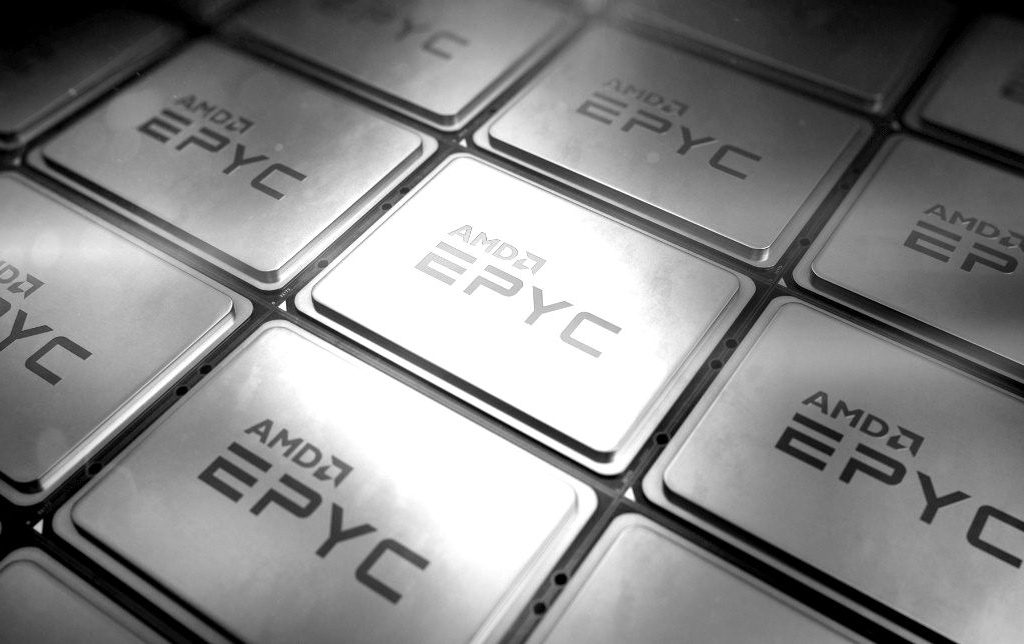It was a long time coming but AMD is finding its footing again in the high performance computing space. At the Computex tradeshow this week in Taipei, CEO Lisa Su talked about her company’s Epyc processors and how they are fulfilling the chipmaker’s HPC ambitions.
The Computex event is heavily skewed toward personal computing gadgetry, so most of the chatter there is about laptops, gaming platforms, smartphones, and the like. Even so, Su spent about 10 minutes of her conference keynote address on their Epyc silicon and almost all of the presentation was devoted to how the architecture has delivered some key successes in HPC on a number of different fronts.
One of those is the company’s huge Department of Energy win for the upcoming “Frontier” supercomputer at Oak Ridge National Lab, which Su recapped during her opening talk. The Cray-built machine, which is scheduled to be installed in 2021 or 2022, will be powered by future custom-built Epyc CPUs and Radeon GPUs, delivering 1.5 exaflops. Having bested both Intel and Nvidia in the competition, the deal gives AMD newfound credibility at the upper echelons of supercomputing.
Su also used her Computex address to reveal that Epyc processors are being used to break new ground in cloud-based HPC. Specifically, Azure HB-series virtual machines were used to scale a computational fluid dynamics (CFD) code to 11,250 cores, using Siemens’s Star-CCM+. The HB series, which are equipped with Epyc 7551 CPUs and 100 Gb/sec EDR InfiniBand, was launched last year by Microsoft to provide an Azure offering for HPC codes hungry for memory-bandwidth. That’s aimed at applications like fluid dynamics, explicit finite element analysis, and weather modeling, among others.
According to Microsoft, the 10,000-plus-core run represents the first time an MPI-based HPC application achieved that level of scalability in a public cloud. And apparently, that’s not the upper limit. A single distributed memory job can use up to 18,000 cores and more than 67 terabytes of memory with Azure’s HB VMs. Here is the raw data for the runs that Microsoft did:
And here is the graphical representation showing the scaling on Star-CCM against ideal scaling for different levels of granularity in the code:
“The idea here is that we have the ability to have the largest cluster of Epyc CPUs that will really allow you to simulate very, very large tasks,” said Su.” Our first customer has already said that they have been able to get a 7,500 speedup by using the Azure cloud with Epyc compared to what they could do before.” The CEO also noted the Baidu and Tencent have brought Epyc processors into their respective clouds.
AMD’s second-generation Epyc, codenamed “Rome,” should be able to accelerate the company’s HPC momentum even further. Having successfully leap-frogged over Intel’s 14 nanometer manufacturing technology, the new 7 nanometer Epyc chips will sport up to 64 cores, double the number in the original Epyc. The vector units in the Rome designs are twice as wide, too, and so as a consequence, Rome will deliver 4X the raw floating point performance of the first-generation “Naples” Epyc processors. That last bit is critical, since the original chips, while superior in memory bandwidth compared to their Xeon counterparts, did not have the same level of floating point math performance.
To illustrate that point for the Computex crowd, AMD datacenter general manager Forrest Norrod came onstage to show how fast the Rome processors were compared to Intel’s latest Cascade Lake Xeon processors. Using NAMD, a molecular dynamics code, a dual-socket server equipped with Rome processors outperformed a dual-socket server equipped with 28-core Xeon 8280s by a factor of two, racking up twice the simulation time for a High Density Lipoprotein (HDL) molecule. Norrod mentioned that that the Xeon 8280 lists at $10,000, implying that their top-end chips will be priced below that.*
It would have been interesting to pit the 64-core Rome against a 56-core Xeon 9282, the top-of-the-line Cascade Lake AP processor, which is said to deliver twice the performance of its 28-core sibling. Intel isn’t disclosing pricing on the Cascade Lake AP chips since they are only being sold to server manufacturers in the form of Intel-designed systems with Intel motherboards. That and the fact that they draw 350 watts to 400 watts puts them in a somewhat different category, server-wise.
Although Su didn’t mention it, Rome has already nailed a couple of big wins for HPC supercomputers that will be deployed in Europe. One is a 24 petaflops system built by Hewlett Packard Enterprise for the High-Performance Computing Center (HLRS) of the University of Stuttgart, which is scheduled to be up and running by the end of the year. The other is a 6.4 petaflops BullSequana machine, which was purchased by the Finnish IT Center for Science. It’s scheduled to be installed in 2020.
With all these Epyc success stories under its belt, HPC now appears to be a central pillar of AMD’s datacenter strategy. “We believe that supercomputing is at the forefront of computer architecture and the innovations in technology that’s driven into systems wind up defining the standard for the datacenter,” Norrod remarked, in a company video on the subject.
Whether that’s true or not is debatable, but success in the HPC arena does confer a certain legitimacy to play in other datacenter environments. In fact, before Intel became more enamored with other application areas like AI and hyperscale computing, HPC was driving their server processor architecture as well. In any case, we will see if AMD’s strategy continues to pay dividends as Rome hits the streets in the third quarter of the year.
*Intel is disputing the results of the NAMD test, claiming that the proper optimizations were not used for the Xeon server test run. When they supply us with the specifics, we will update the article with that information.

